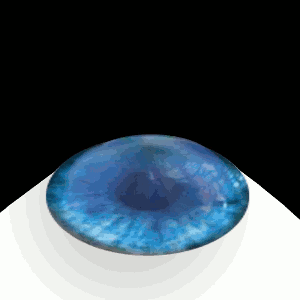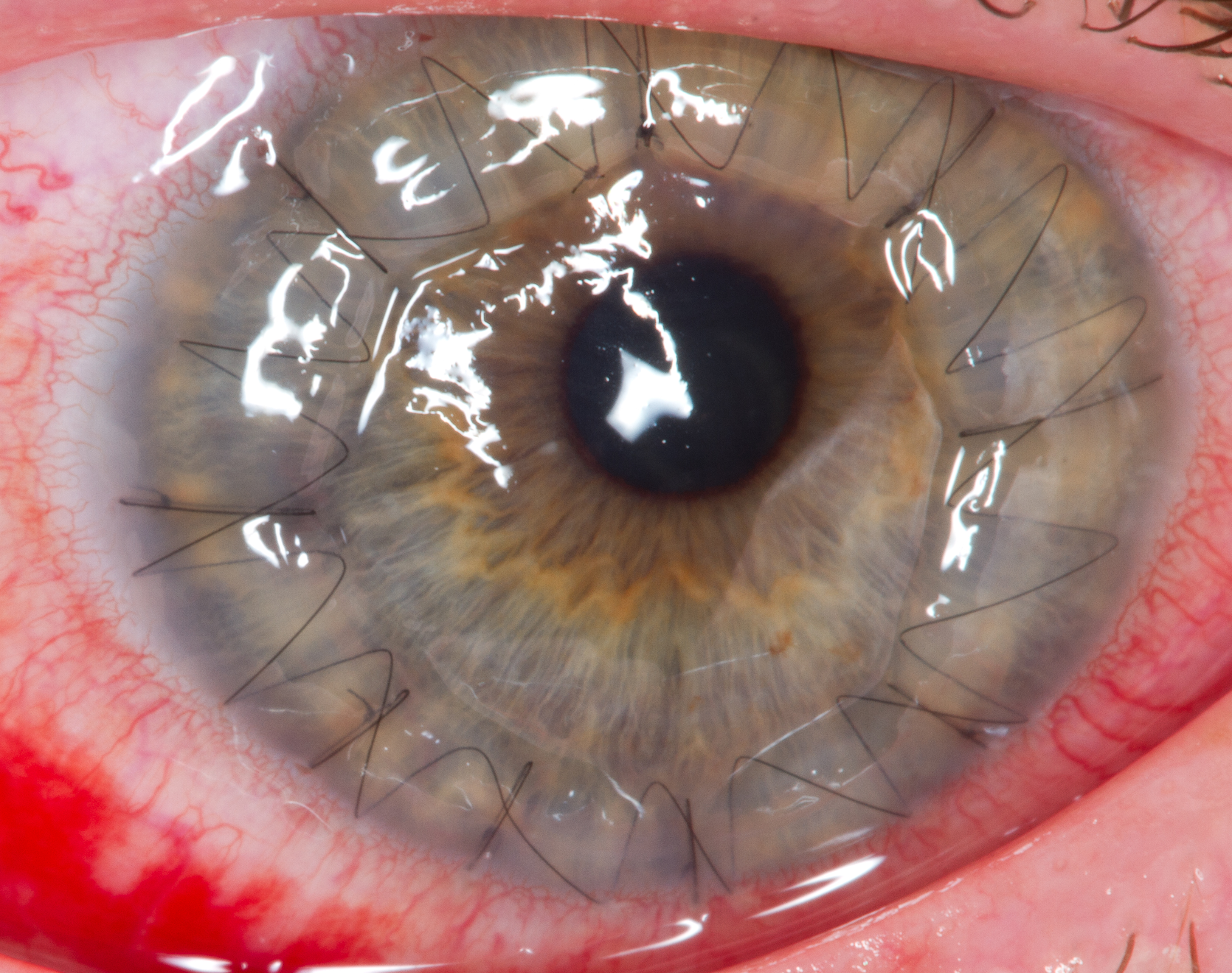|
Microkeratome
A microkeratome is a precision surgical instrument with an oscillating blade designed for creating the corneal flap in LASIK or ALK surgery. The normal human cornea varies from around 500 to 600 micrometres in thickness; and in the LASIK procedure, the microkeratome creates an 83 to 200 micrometre thick flap. This piece of equipment is used all around the world to cut the cornea flap. The microkeratome is also used in Descemet's stripping automated endothelial keratoplasty (DSAEK), where it is used to slice a thin layer from the back of the donor cornea, which is then transplanted into the posterior cornea of the recipient. It was invented by Jose Barraquer and Cesar Carlos Carriazo in the 1950s in Colombia. See also *Instruments used in general surgery There are many different surgical specialties, some of which require very specific kinds of surgical instruments to perform. General surgery is a specialty focused on the abdominal contents, as well as the thyroid gland, and ... [...More Info...] [...Related Items...] OR: [Wikipedia] [Google] [Baidu] |
LASIK
LASIK or Lasik (''laser-assisted in situ keratomileusis''), commonly referred to as laser eye surgery or laser vision correction, is a type of refractive surgery for the correction of myopia, hyperopia, and an actual cure for astigmatism, since it is in the cornea. LASIK surgery is performed by an ophthalmologist who uses a laser or microkeratome to reshape the eye's cornea in order to improve visual acuity. For most people, LASIK provides a long-lasting alternative to eyeglasses or contact lenses. LASIK is very similar to another surgical corrective procedure, photorefractive keratectomy (PRK), and LASEK. All represent advances over radial keratotomy in the surgical treatment of refractive errors of vision. For patients with moderate to high myopia or thin corneas which cannot be treated with LASIK and PRK, the phakic intraocular lens is an alternative. As of 2018, roughly 9.5 million Americans have had LASIK and, globally, between 1991 and 2016, more than 40 million proced ... [...More Info...] [...Related Items...] OR: [Wikipedia] [Google] [Baidu] |
Automated Lamellar Keratoplasty
Automated lamellar keratoplasty (ALK), also known as keratomileusis in situ, is a non-laser lamellar refractive procedure used to correct high degree refractive errors. This procedure can correct large amounts of myopia and hyperopia. However, the resultant change is not as predictable as with other procedures. Procedure ALK uses a device called a microkeratome to separate a thin layer of the cornea and create a flap. The eye is anesthetized and a ring is fixed to it in order to keep it properly positioned and flat. The microkeratome then makes a small incomplete flap across the cornea by cutting across it. While still attached at one side, the corneal flap is folded back to reveal a sub layer of cornea. At this point, the microkeratome is precisely readjusted to match the calculated cut depth for the patient's vision correction. The calculation is based on the patient's glasses and contact lens prescriptions. The surgeon then passes the microkeratome completely over the eye mak ... [...More Info...] [...Related Items...] OR: [Wikipedia] [Google] [Baidu] |
Jose Barraquer
José Ignacio Barraquer Moner (24 January 1916 – 13 February 1998) was a Spanish ophthalmologist and inventor born in Barcelona who did most of his life's work in Bogotá, Colombia. His original pioneering investigations on corneal transplants and correction of corneal refraction led him to be designated as “Father of modern Refractive Surgery”. His ophthalmological surgical techniques and inventions are now in routine use by the ophthalmic community. Biography He was born in Barcelona, first son of Ignacio Barraquer (March 25, 1884 – May 13, 1965) and Josefa Moner Raguer (1893-1987). His grandfather, José Antonio Barraquer i Roviralta (1852-1924) was a pioneer of modern ophthalmology in Spain and a great histopathologist, and the brother of Lluis Barraquer i Roviralta (1855-1928), a pioneer of neurology and the founder, in 1882, of the first department of clinical neurology and electrotherapy in Spain; his son Lluis Barraquer Ferré (1887-1959) and his grandson Llui ... [...More Info...] [...Related Items...] OR: [Wikipedia] [Google] [Baidu] |
Ophthalmology
Ophthalmology ( ) is a surgical subspecialty within medicine that deals with the diagnosis and treatment of eye disorders. An ophthalmologist is a physician who undergoes subspecialty training in medical and surgical eye care. Following a medical degree, a doctor specialising in ophthalmology must pursue additional postgraduate residency training specific to that field. This may include a one-year integrated internship that involves more general medical training in other fields such as internal medicine or general surgery. Following residency, additional specialty training (or fellowship) may be sought in a particular aspect of eye pathology. Ophthalmologists prescribe medications to treat eye diseases, implement laser therapy, and perform surgery when needed. Ophthalmologists provide both primary and specialty eye care - medical and surgical. Most ophthalmologists participate in academic research on eye diseases at some point in their training and many include research as part ... [...More Info...] [...Related Items...] OR: [Wikipedia] [Google] [Baidu] |
Surgery
Surgery ''cheirourgikē'' (composed of χείρ, "hand", and ἔργον, "work"), via la, chirurgiae, meaning "hand work". is a medical specialty that uses operative manual and instrumental techniques on a person to investigate or treat a pathological condition such as a disease or injury, to help improve bodily function, appearance, or to repair unwanted ruptured areas. The act of performing surgery may be called a surgical procedure, operation, or simply "surgery". In this context, the verb "operate" means to perform surgery. The adjective surgical means pertaining to surgery; e.g. surgical instruments or surgical nurse. The person or subject on which the surgery is performed can be a person or an animal. A surgeon is a person who practices surgery and a surgeon's assistant is a person who practices surgical assistance. A surgical team is made up of the surgeon, the surgeon's assistant, an anaesthetist, a circulating nurse and a surgical technologist. Surgery usually spa ... [...More Info...] [...Related Items...] OR: [Wikipedia] [Google] [Baidu] |
Cornea
The cornea is the transparent front part of the eye that covers the iris, pupil, and anterior chamber. Along with the anterior chamber and lens, the cornea refracts light, accounting for approximately two-thirds of the eye's total optical power. In humans, the refractive power of the cornea is approximately 43 dioptres. The cornea can be reshaped by surgical procedures such as LASIK. While the cornea contributes most of the eye's focusing power, its focus is fixed. Accommodation (the refocusing of light to better view near objects) is accomplished by changing the geometry of the lens. Medical terms related to the cornea often start with the prefix "'' kerat-''" from the Greek word κέρας, ''horn''. Structure The cornea has unmyelinated nerve endings sensitive to touch, temperature and chemicals; a touch of the cornea causes an involuntary reflex to close the eyelid. Because transparency is of prime importance, the healthy cornea does not have or need blood vessels with ... [...More Info...] [...Related Items...] OR: [Wikipedia] [Google] [Baidu] |
Corneal Transplantation
Corneal transplantation, also known as corneal grafting, is a surgical procedure where a damaged or diseased cornea is replaced by donated corneal tissue (the graft). When the entire cornea is replaced it is known as penetrating keratoplasty and when only part of the cornea is replaced it is known as lamellar keratoplasty. Keratoplasty simply means surgery to the cornea. The graft is taken from a recently deceased individual with no known diseases or other factors that may affect the chance of survival of the donated tissue or the health of the recipient. The cornea is the transparent front part of the eye that covers the iris, pupil and anterior chamber. The surgical procedure is performed by ophthalmologists, physicians who specialize in eyes, and is often done on an outpatient basis. Donors can be of any age, as is shown in the case of Janis Babson, who donated her eyes after dying at the age of 10. Corneal transplantation is performed when medicines, keratoconus conservat ... [...More Info...] [...Related Items...] OR: [Wikipedia] [Google] [Baidu] |
Instruments Used In General Surgery
There are many different surgical specialties, some of which require very specific kinds of surgical instruments to perform. General surgery is a specialty focused on the abdominal contents, as well as the thyroid gland, and diseases involving skin, breasts, various soft tissues, trauma, peripheral vascular disease, hernias, and endoscopic procedures. This page is dedicated specifically to listing surgical instruments used in general surgery. Instruments can be classified in many ways - but broadly speaking, there are five kinds of instruments. # Cutting and dissecting instruments: #*Scalpels, scissors, and saws are the most traditional #*Elevators can be both cutting and lifting/retracting #*Although the term dissection is broad, energy devices such as diathermy/cautery are often used as more modern alternatives. # Grasping or holding instruments: #*Classically this included forceps and clamps predominantly #*Roughly, forceps can be divided into traumatic (tissue crushin ... [...More Info...] [...Related Items...] OR: [Wikipedia] [Google] [Baidu] |



.jpg)


